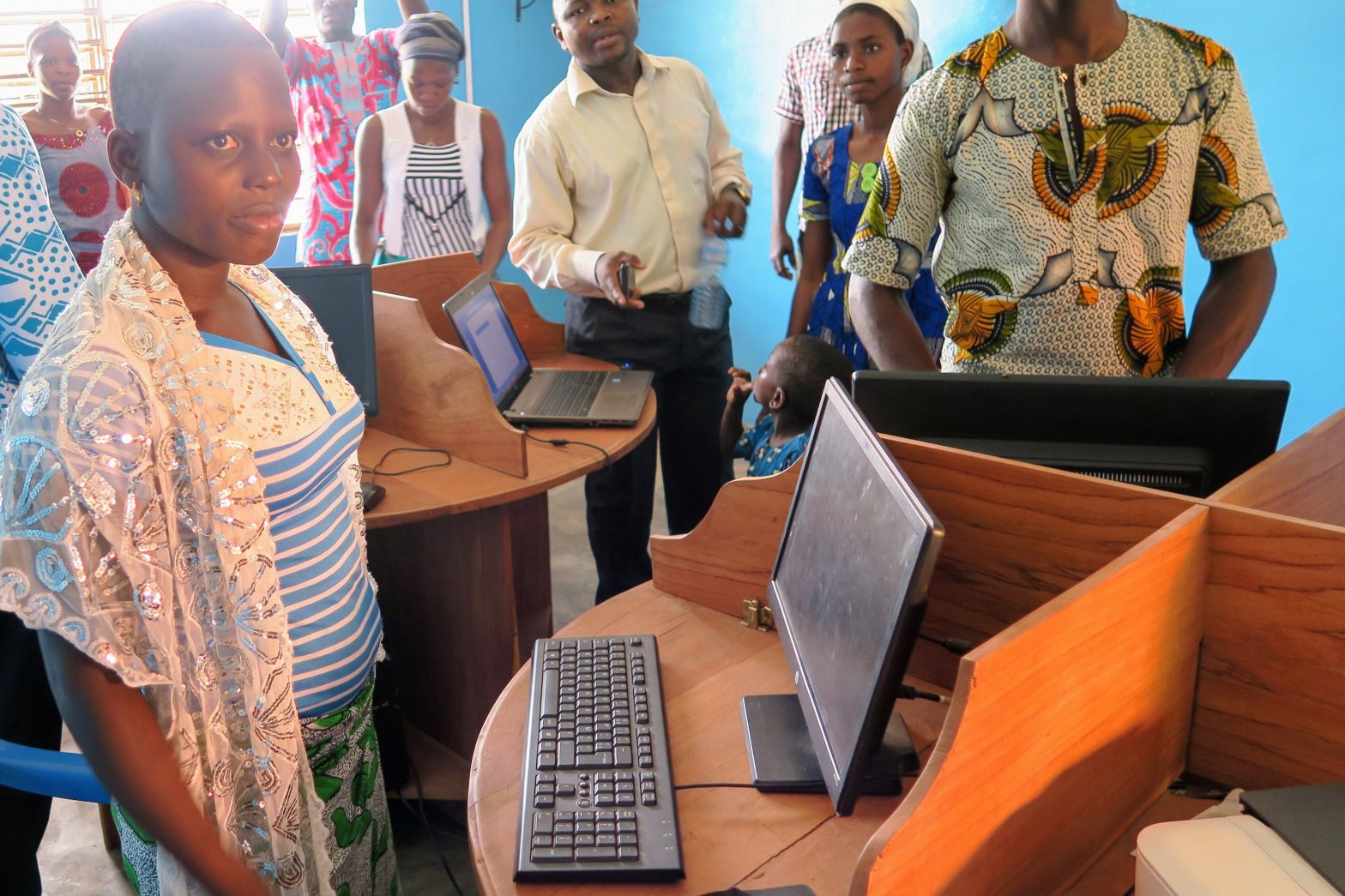How can we track progress on “localizing the SDGs” and building strong communities?
I had a striking experience this Spring in rural Benin (photo above). Young villagers were learning to use the web at their Hunger Project epicenter. What were they looking up? How to access their local government — information still all too rare, and information that is power.
July 10, 2017 began the second UN High Level Political Forum (HLPF). Forty-four nations have submitted reports on their progress towards achieving the 2030 Sustainable Development Goals (SDGs), with the focus on Eradicating poverty and promoting prosperity in a changing world.
From our perspective in the Movement for Community-led Development, the key is to shift the power from top-down to bottom-up. Countries must put resources and decision making in the hands of local communities. In the words of Pope Francis, we need to empower people to be “dignified agents of their own development.”
Is this happening? Are grassroots people gaining power? And how would we know?
One good sign is that many of the 44 countries are putting it in their Voluntary National Reports (VNRs). The VNRs cite planning and consultations with local governments and civil society, and making “localizing the SDGs” a priority. For the first time in years, the Human Development Report 2016 writes about fiscal decentralization. Yet grassroots women’s organizations and youth continue to express frustration at their lack of inclusion — particularly given their critical roles in society.
Here is a top 10 list of best practices that some countries and donors have begun applying — and we believe all should follow suit. Click on the links to learn more.
- Grassroots Women’s Leadership and Organizations. The most important place to #shiftthepower is to strengthen the collective voices of women as agents of change in their communities by funding women’s organizations and providing leadership training to women who’ve never before had that opportunity. Women are on the front lines of ending hunger and poverty, yet a tiny share of aid supports these critical organizations.
- Young women’s cooperatives. Recent commitments to women’s entrepreneurship are wonderful, yet only a small fraction of women want to be entrepreneurs. The best pathway for broad-based economic progress for women is through investing in their cooperatives, particularly for young women.
- Citizen Charters. This simple device informs citizens of the standards they have a right to expect in the full set of public services, and how to access them. Afghanistan is in the process of transforming its highly successful but narrowly focused community-driven National Solidarity Program into a comprehensive community-led development program based on Citizen Charters.
- A Fair Share of Public Resources. The lowest income countries tend to allocate a far smaller share of public resources to local governments than do wealthier countries, yet a growing number of countries such as Kenya have committed to rapidly reverse this trend.
- Community Philanthropy. Impoverished communities need not only depend on public funds — many communities establishing their own Community Foundations and tapping into the desires of community members and their own diaspora to invest their own resources in improving lives.
- Social Capital. Aid has never been the primary resource for development — it has always been people power — the hard work of women and men to improve their own lives. “Social Capital” comprises the organizations and linkages people have which leverage their efforts, and there is a resurgence of evidence in the process of building and measuring social capital.
- Bottom-up Budgeting. There is now a wealth of evidence that mobilizing citizens to directly allocate a share of the government budget pays enormous dividends in improved services, transparency and accountability.
- Data for the People. National quality of life surveys do not empower communities to set their own priorities and track their own progress. Proponents of community-led development have devised numerous innovations — community score cards, citizen report cards, and community-level household surveys.
- The Future for NGOs. As civil society has gained influence, some governments are cracking down, particularly on “foreign-funded” NGOs. Do international NGOs (INGOs) have a future, and what is it? Civil society, like a free press, will always be needed to help people hold their governments to account. Civil society must be locally led — backed up by global networks and INGOs. NGOs have a competitive advantage in community mobilization, process facilitation, training, and capacity building — a role that many governments see as partners rather than opponents.
- District Coordination. The “middle” level of government — the county or district — is often where local community aspirations can access the technical resources of government and the mainstream economy. Monthly district coordination meetings among NGOs, academia and government departments can work strategically to truly ensure all communities are empowered to achieve the SDGs.


